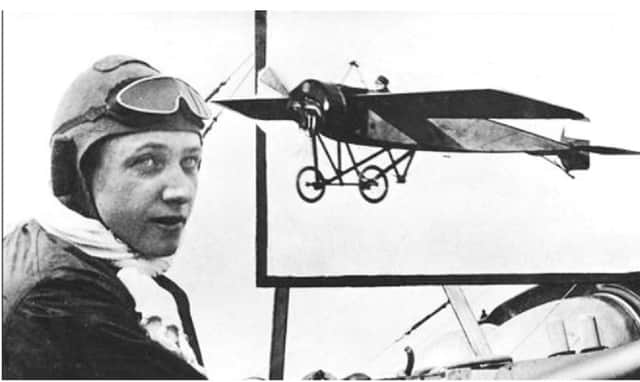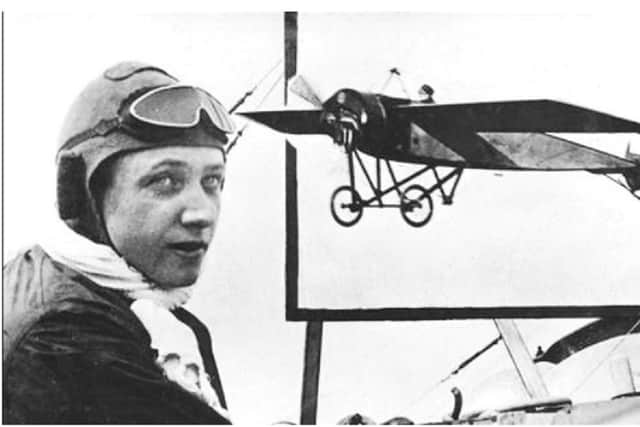The spectacular air show above Sunderland - 106 years ago


But how many of you knew that the first ever spectacle in the skies appeared above Sunderland 106 years ago?
Norman Kirtlan, from Sunderland Antiquarian Society, told us more.


Advertisement
Hide AdAdvertisement
Hide AdIt was in July 1912, when aeroplanes and aviators were both in their infancy, that Gustav Wilhelm Hamel made an announcement.
He told the world that on July 27, he would be giving a show.
He would be taking off from Boldon Racecourse and performing breath-taking feats above Sunderland and South Shields.
For the best views of his more daring exploits it was recommended that spectators take up their places near the Fulwell Mill.
Advertisement
Hide AdAdvertisement
Hide AdAs it happened, the day was anything but a success and, as folk down at Seaburn know only too well, even in the height of summer, high winds and low cloud can ruin even the best-planned air-shows.
However, on July 31, 1912, it was a much better day.
And Gustav, promising to give the people of Sunderland “an extra good show,” took off as planned to rapturous applause from the crowds who had gathered to witness the spectacle.
More than 4,000 people packed in to the racecourse and despite a wind that was far from ideal, they watched in awe as the young airman flew his Bleriot Monoplane around the skies above Shields, before zooming off at all of 60mph towards Sunderland.
It was then that hundreds of folks at Fulwell Mill saw the most spectacular display, culminating in Hamel climbing to 1,300 feet and turning off his engine.
Advertisement
Hide AdAdvertisement
Hide AdMuch to the horror of those below, he made a steep dive down to earth at an angle of 75 degrees, causing spectators to scatter in all directions. They thought the plane was out of control.
At 100ft however, Hamel pulled out of the dive and circled the Mill, waving to his audience and shooting off to do a few circuits of Penshaw Monument.
Hamel put on a number of other shows that day, before finally landing and being besieged by autograph-hunters. He was presented with a silver cigarette case by Sunderland’s Mayor, Coun Brown, to which the aviator politely replied, “That’s awfully nice of you. Thank you very much.”
Nothing much was heard locally of Mr Hamel, until in May 1914, a piece appeared in the Sunderland Echo:
Advertisement
Hide AdAdvertisement
Hide AdIt told how the family of Mr Hamel made a special appeal “to those living in rural districts and remote parts, more particularly in the south the country and Belgium, to search lonely spots of wooded or other land in case the missing airman may be lying somewhere off the beaten trake (sic) injured and unable move.”
They told of their deep gratitude to anyone who should help and requested that people rule out nothing - a fall inland, the sea and there were to be no limits to the search.
Hamel died before reaching the age of 25. He disappeared over the English Channel on May 23, 1914, while returning from Villacoublay on a new Morane-Saulnier monoplane he had just collected and was to compete with in the Aerial Derby the same day.
On July 6, 1914 the crew of a fishing vessel found a body in the Channel off Boulogne. Although they did not retrieve the body, their description of items of clothing and of finding a road map of southern England on the body provided strong circumstantial evidence that it was Hamel.
Advertisement
Hide AdAdvertisement
Hide AdNorman added: “At this time of high international tension, there was speculation that he might have been the victim of sabotage, but no trace of the aircraft was ever found and the story faded with his memory.
“One thing was for certain though, not one of those people who witnessed Gustav’s breath-taking feats over Fulwell Mill would ever forget this brave young man and the memories that he left with them. Perhaps this year the Red Arrows should dip their wings in honour of brave pioneer who thrilled us a hundred years ago.”